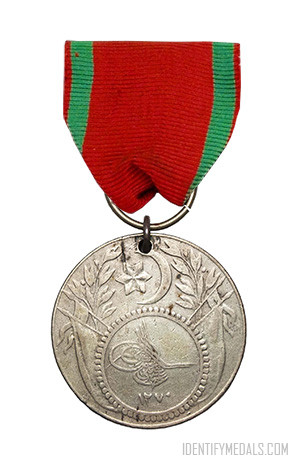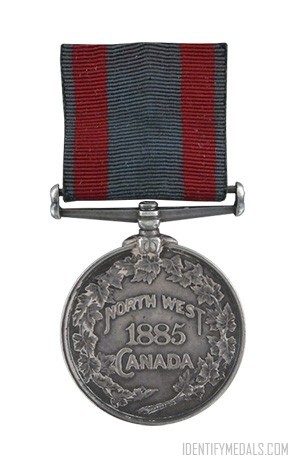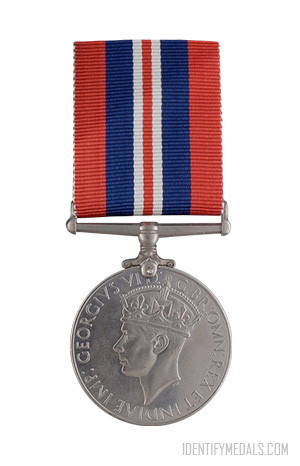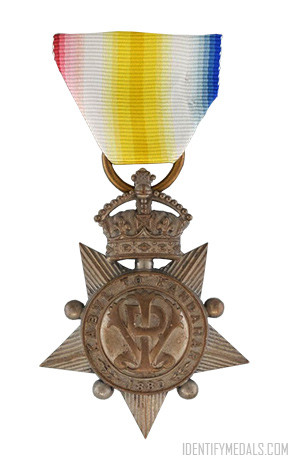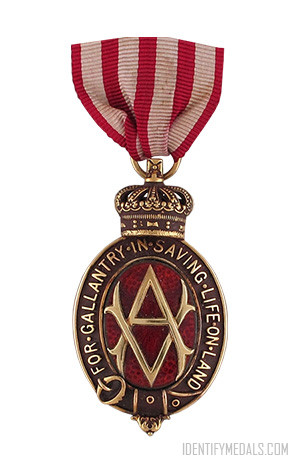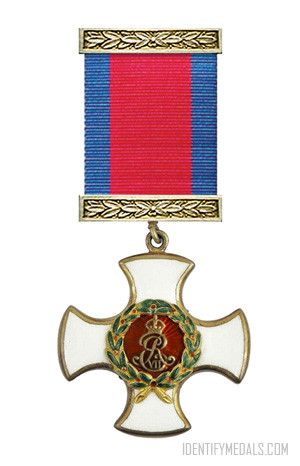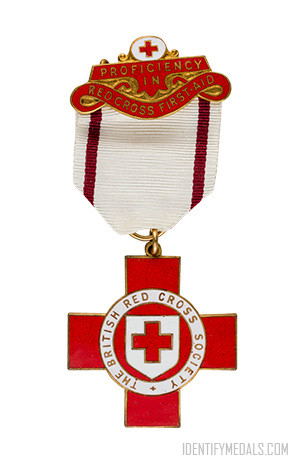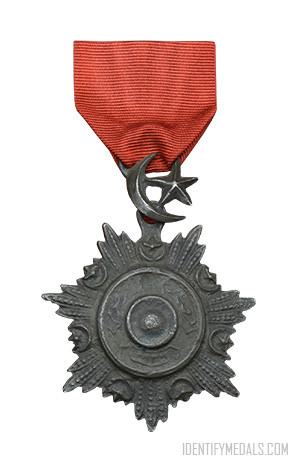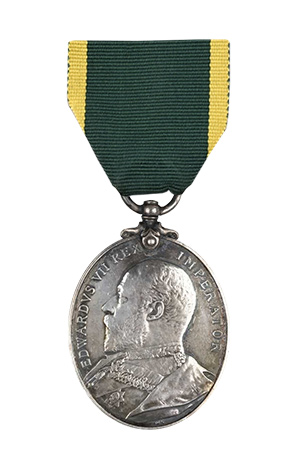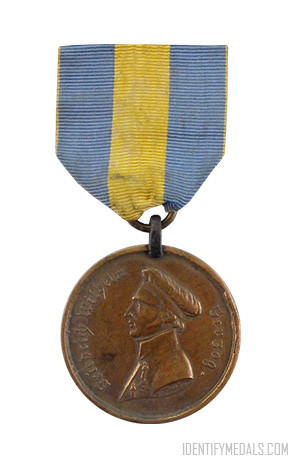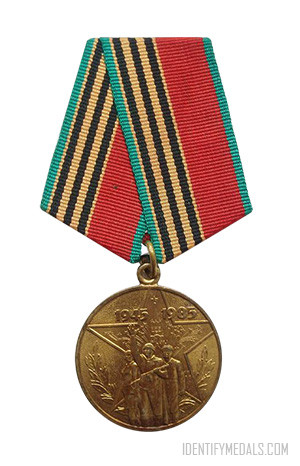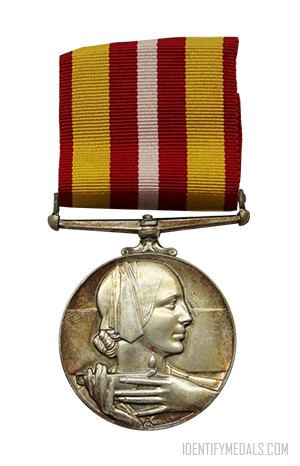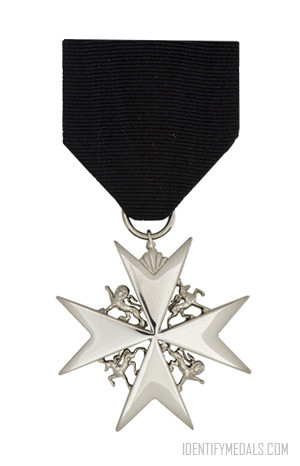- Time Period: Pre-WW1
- Year of Institution: 1853
- Country: Great Britain, Turkey
The Turkish Medal for Glory was instituted by the Sultan of Turkey in 1853 and awarded to officers and men of British forces for participation in the Danube Campaign early in the Crimean War against Russia, at Silistria and Giurgevo, and later for other campaigns where no specific campaign medal was struck.
The medal is sometimes also referred to as the General Service Medal or Danube Medal.
The Turkish Medal for Glory Design
The medal is circular and struck in gold or silver. It measures 31 mm in diameter.
The obverse shows the tughra (cipher) of Sultân Abdül-Mejîd I above the date ‘1270’ (AH1270 = 1853AD) within a beaded circle imposed on crossed standards and a laurel wreath. There’s also a left-facing crescent and faceted six-pointed star above.
The reverse bears a faceted six-pointed star imposed on a faceted twelve-pointed star above a ribbon inscribed in Arabic letters ‘Nishani Iftihar’ (Order of Glory), a six-pointed star to either side and one below on a spray of laurel.
The medal is pierced for ribbon suspension with ring and flat suspension bar. The ribbon is crimson with green edges.

